In the modern world it is often required to establish effective ways of communication between parties to achieve the best results. Request for Proposal is a formal explanation of requirements for a software project from a client. The purpose of this document is for a client to explain the needs of the project and to request offers from software development companies that feature the strategy, timing, and potential cost of development. The company that provides the proposals best matching the client’s demand will be selected to perform the project and execute the contract.
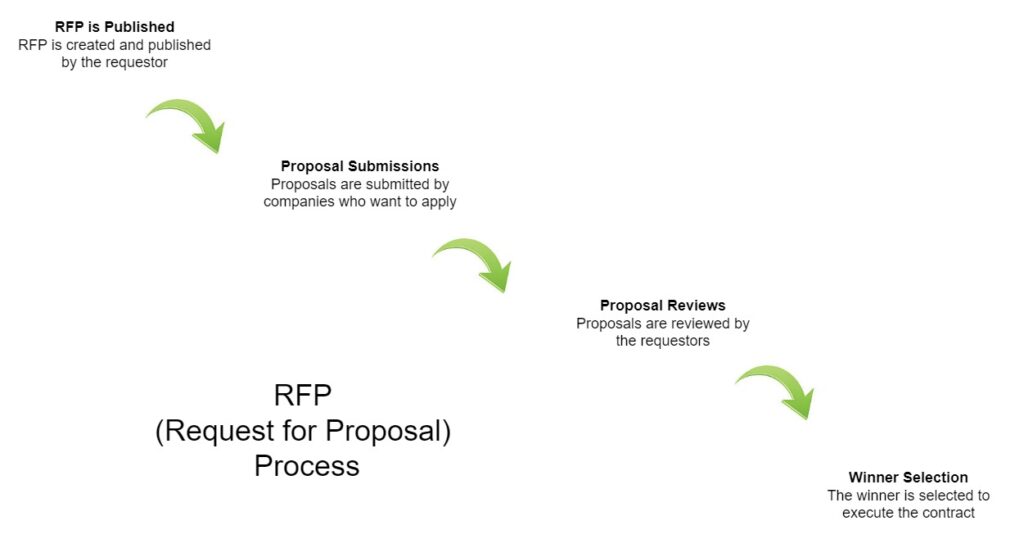
Let’s review a real example of a RFP document. Although the document and analysis provided in this article is real, keep in mind that the data and estimates are completely random. So please don’t take them too seriously. OK, let’s get into it.
Our current RFP was created by the U.S. Endowment for Forestry and Communities. You can find it on that link. The main idea of the project is to create a platform that provides high quality, standardized carbon data on forests to end users.
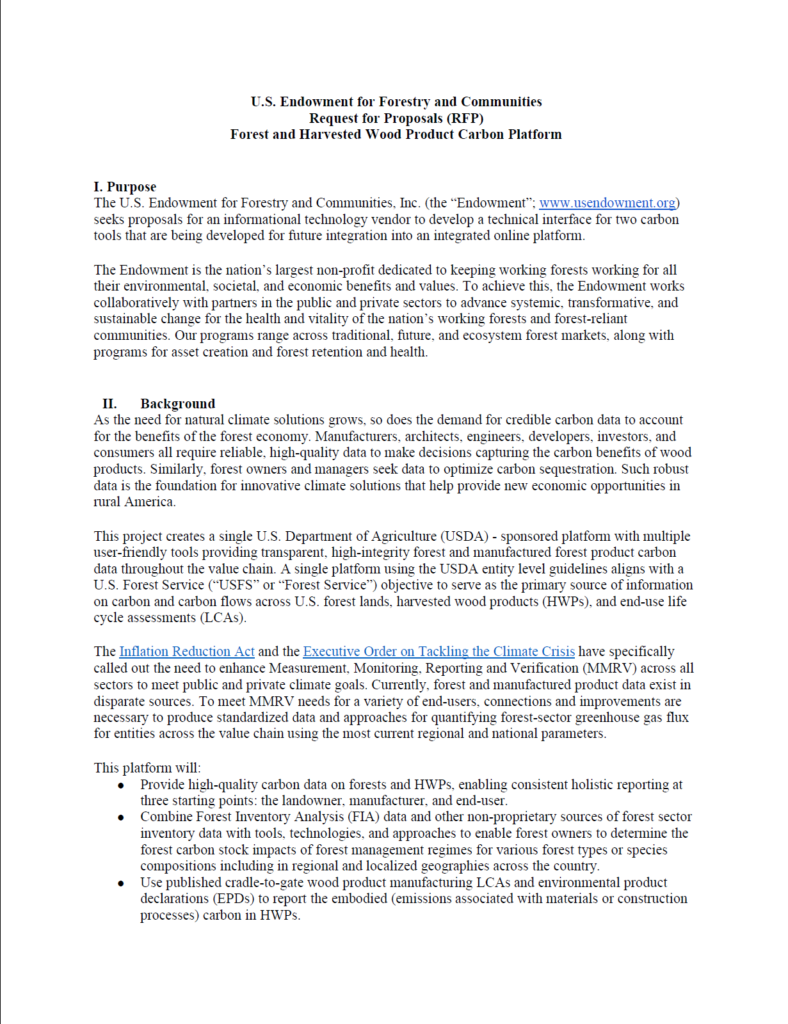
Basically, the RFP document consists of the following parts: general explanation of the project and its idea, technical information that features the expected components to be delivered, and detailed information about the application process.
In a few sections of the document, the technical requirements are clarified for the platform. In particular, they state that pre-existing tools for the platform need to be integrated together with the newly developed tools in order to form a single software ecosystem. The document lines up the technical requirements for the new tools, the tools to be adopted, and the platform in general. The requirements are actually pretty detailed and give a good perspective on the scope of work required for development.
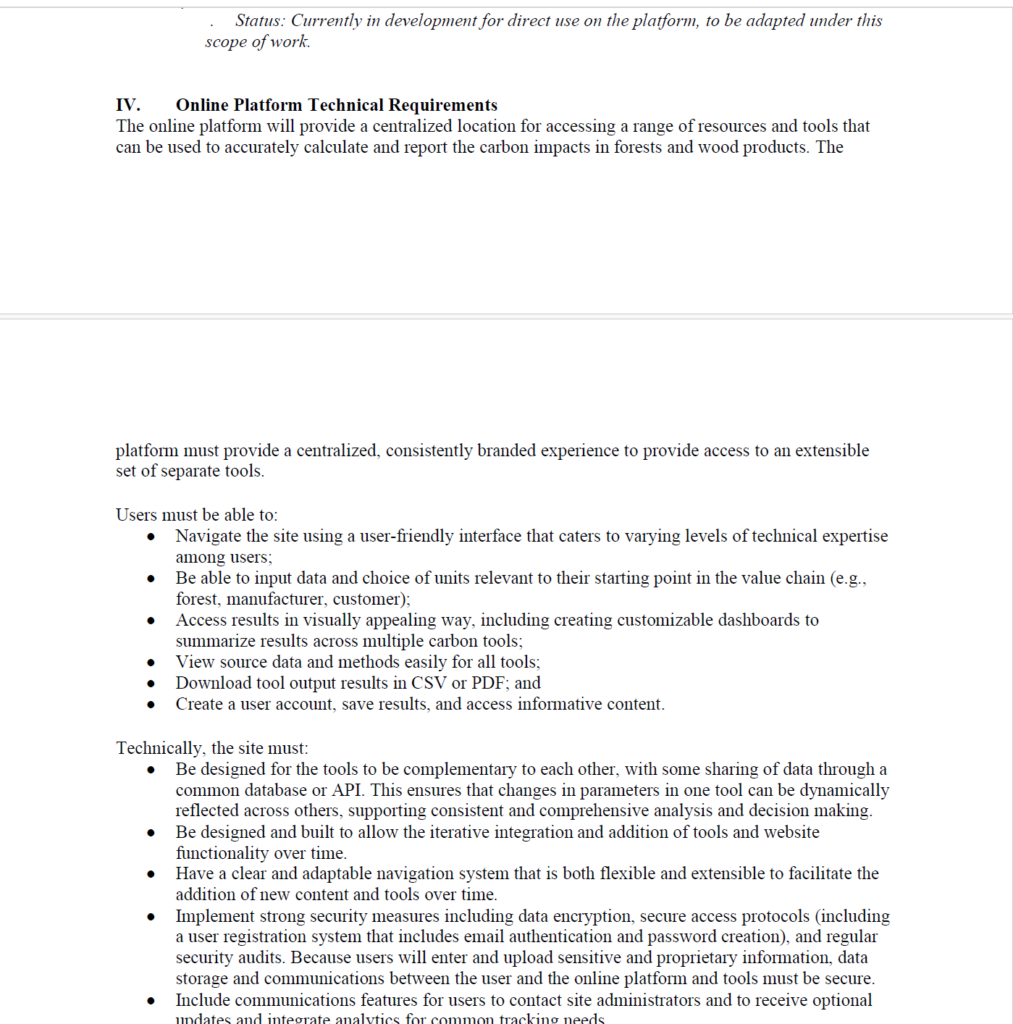
The document ends with some organizational points. It features the projected start date, phases, and criterias from potential appliers. In particular, it states that companies need to have certain work experience and references to apply and that they must develop a project design document including project cost, timelines, and deliverables. So the major part of this video will be devoted to the creation of this project design document.
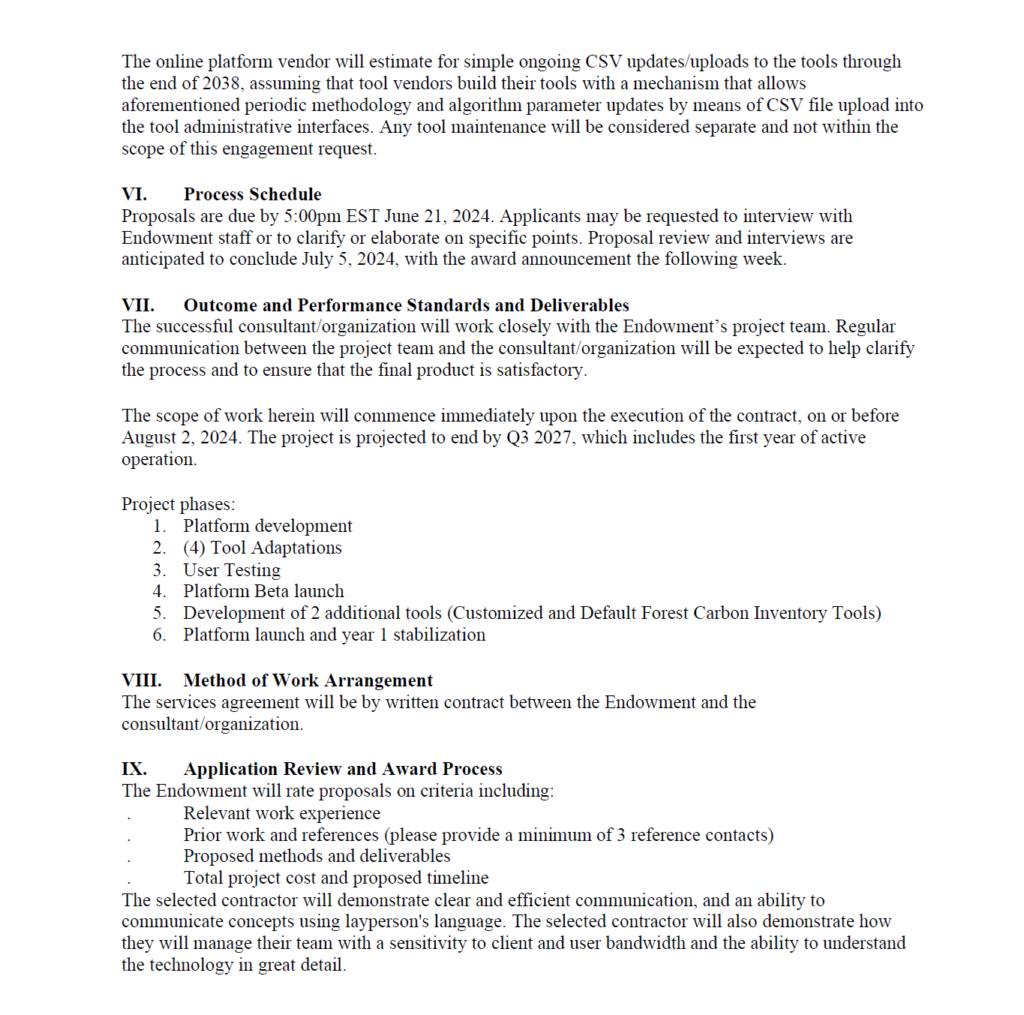
Now that we have reviewed the project, let’s create the plan of how we can create a response for that RFP. It will consist of the following steps:
- Creating a Project Design Document
- Decomposing the project into deliverables
- Creating a schedule
- Evaluating budget based on schedule resources
- Creating a summary document that features deliverables, budget, and schedule highlights
The first step in designing a project is decomposition. To evaluate our deliverables and build a schedule most efficiently, I will be entering them into Deep Planner, an app specialized in planning for IT projects. Let’s first enter the business deliverables.
Business deliverables are basically represented by project phases listed under the outcomes section of the document. They consist of platform development, tool adaptions, user testing, platform beta launch, development of 2 additional tools, platform launch and 1 year stabilization. Let’s enter all of those deliverables into Deep Planner.
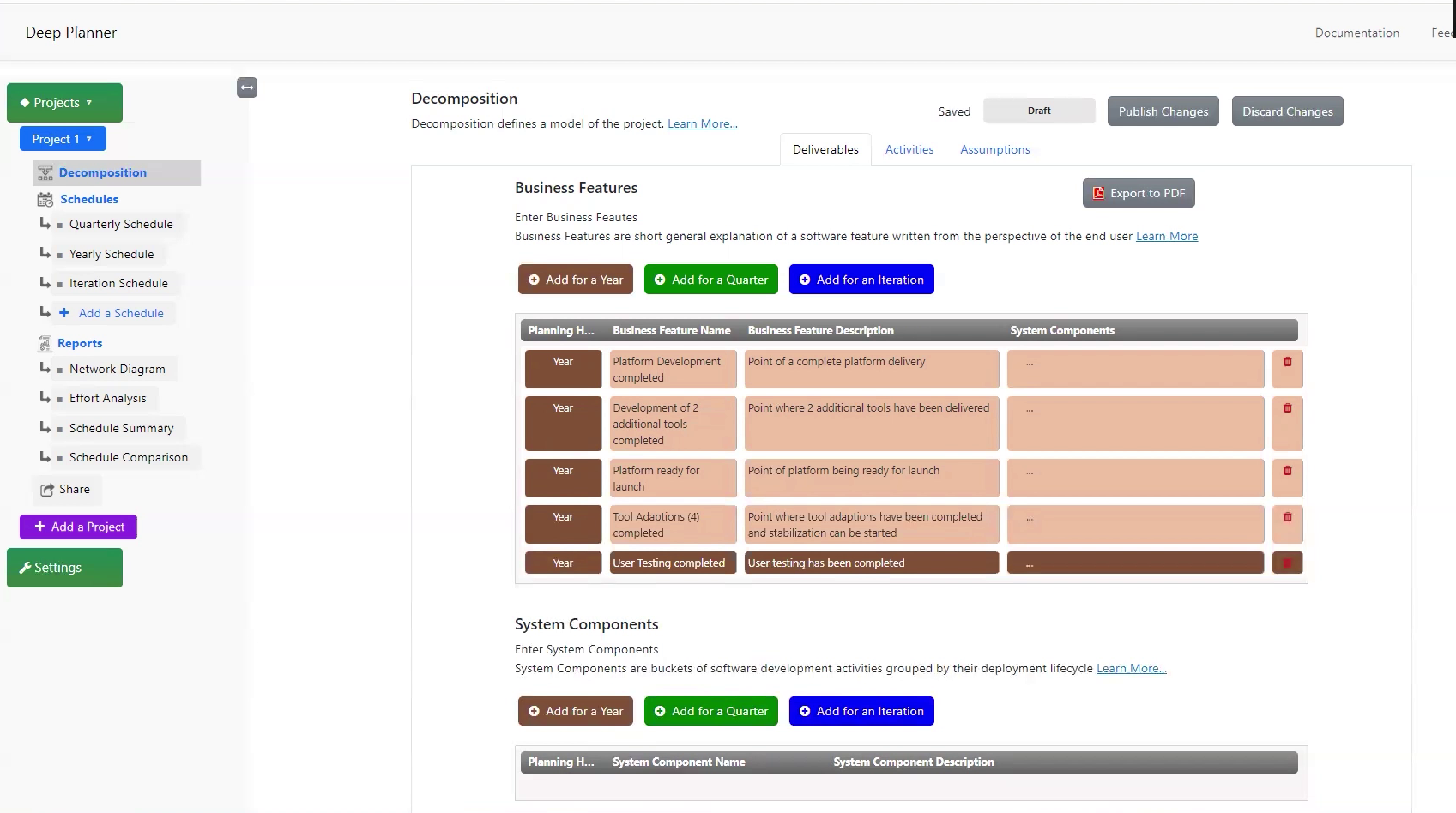
In the next step, I will be entering the system components to satisfy the requirements for business features. I defined an architecture consisting of shared components, such as API gateways and databases, and specific applications, such as Carbon Inventory Website and tools websites. Let’s enter the components into Deep Planner.
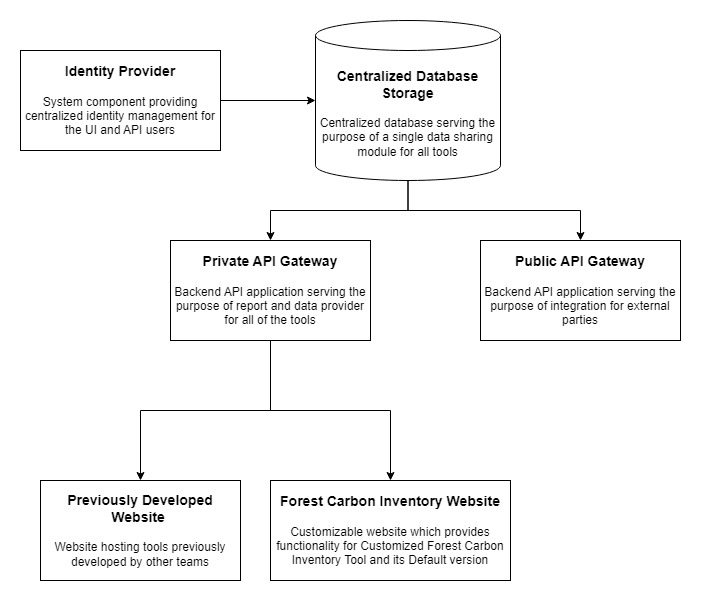
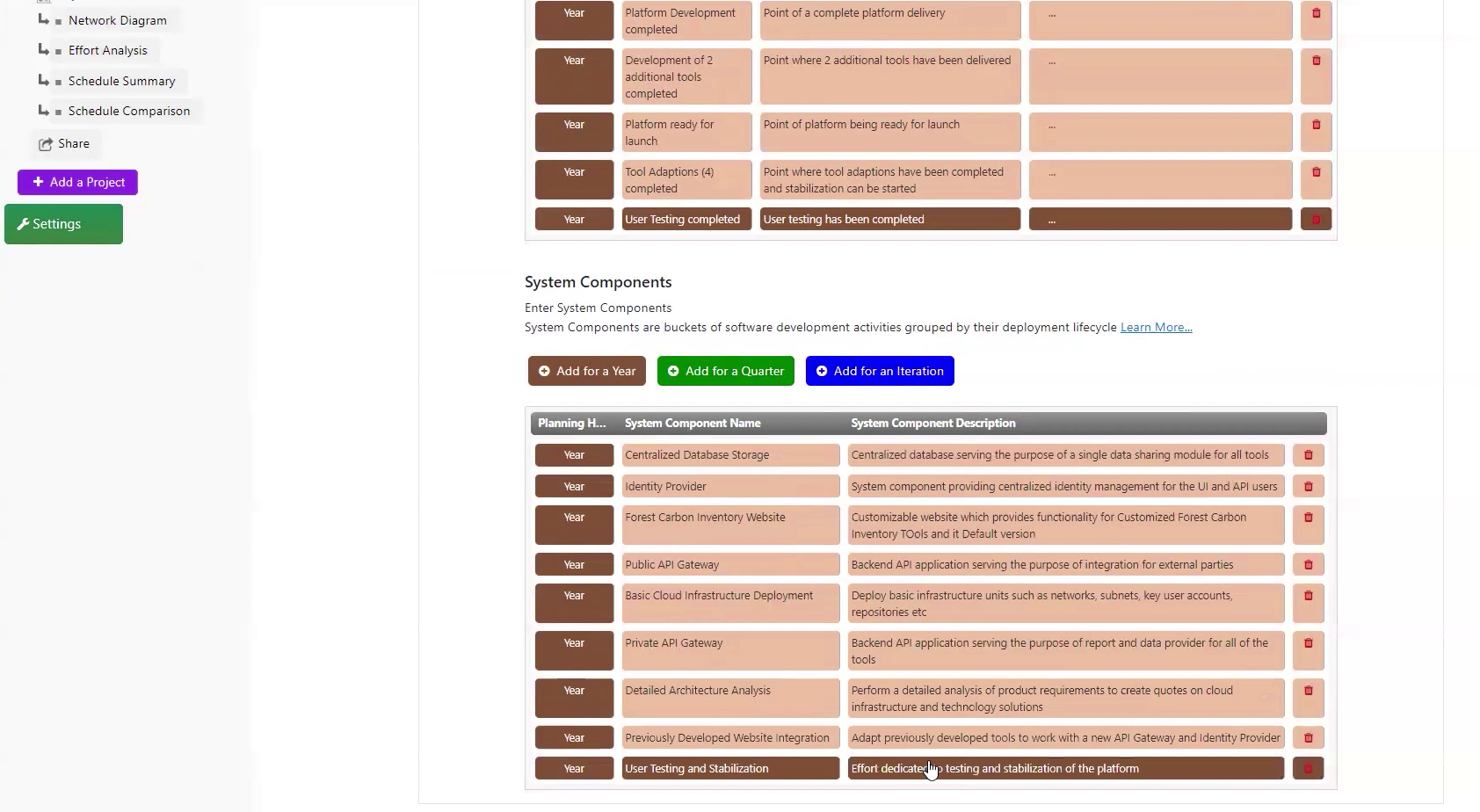
Note that each business feature maps into system components. It is important to specify this mapping after the system components have been entered.
Now it’s time to define activities. Each system component consists of different activities such as development, business analysis, testing, and release. I enter every activity with estimates and specify those estimates as highly uncertain because this phase of the project is pretty early. I define dependencies between activities. This also will define the dependencies between system components that I entered earlier. Once this is done, let’s go ahead and publish the decomposition.
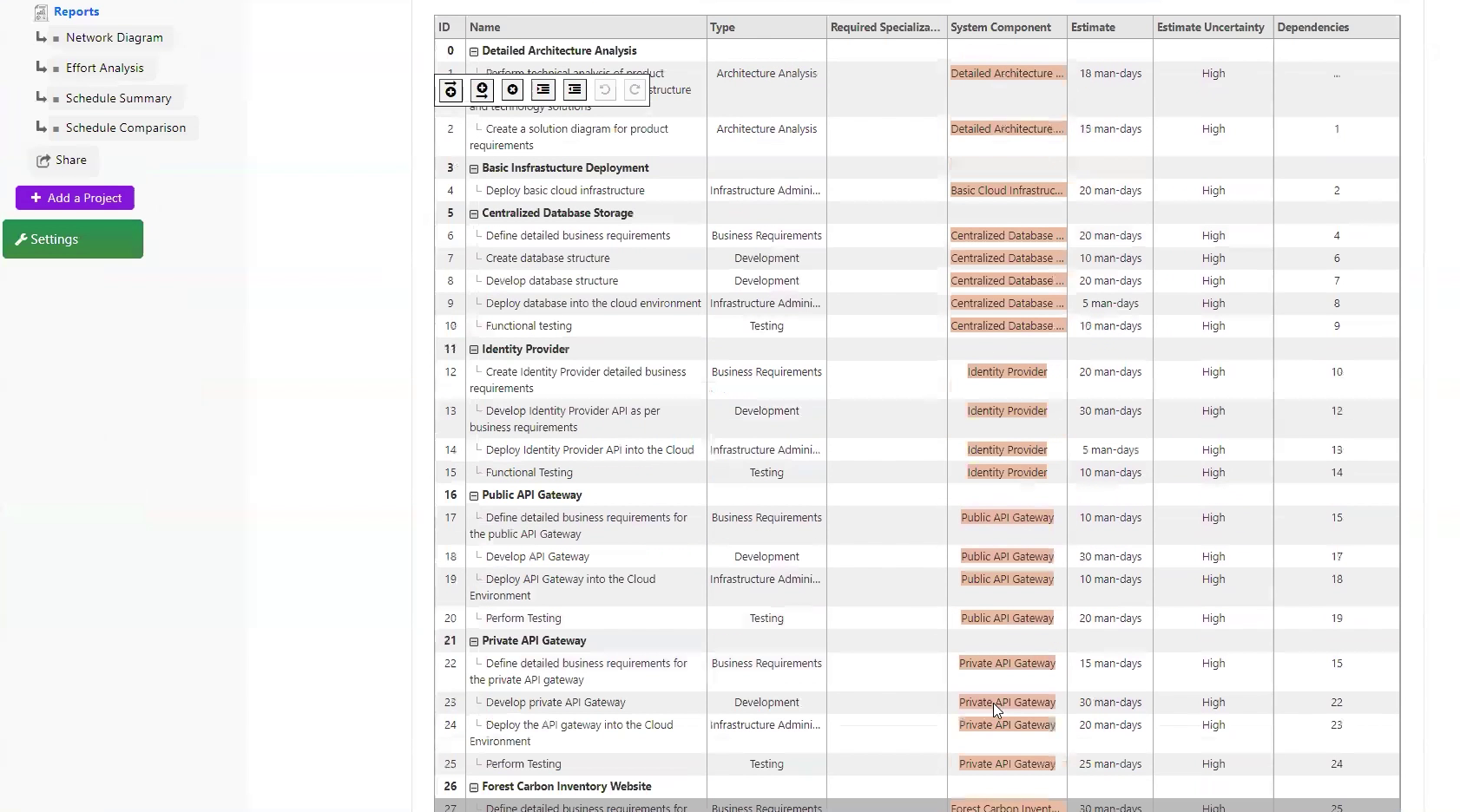
Now, let’s analyze the dependencies between components that Deep Planner has generated. For that, let’s open the Network Diagram. On the diagram, we can see that by the nature of the components, it can be convenient to use just one team in the first phases .At later phases, one more team can be added to help integrate the other tools and build a private gateway faster.
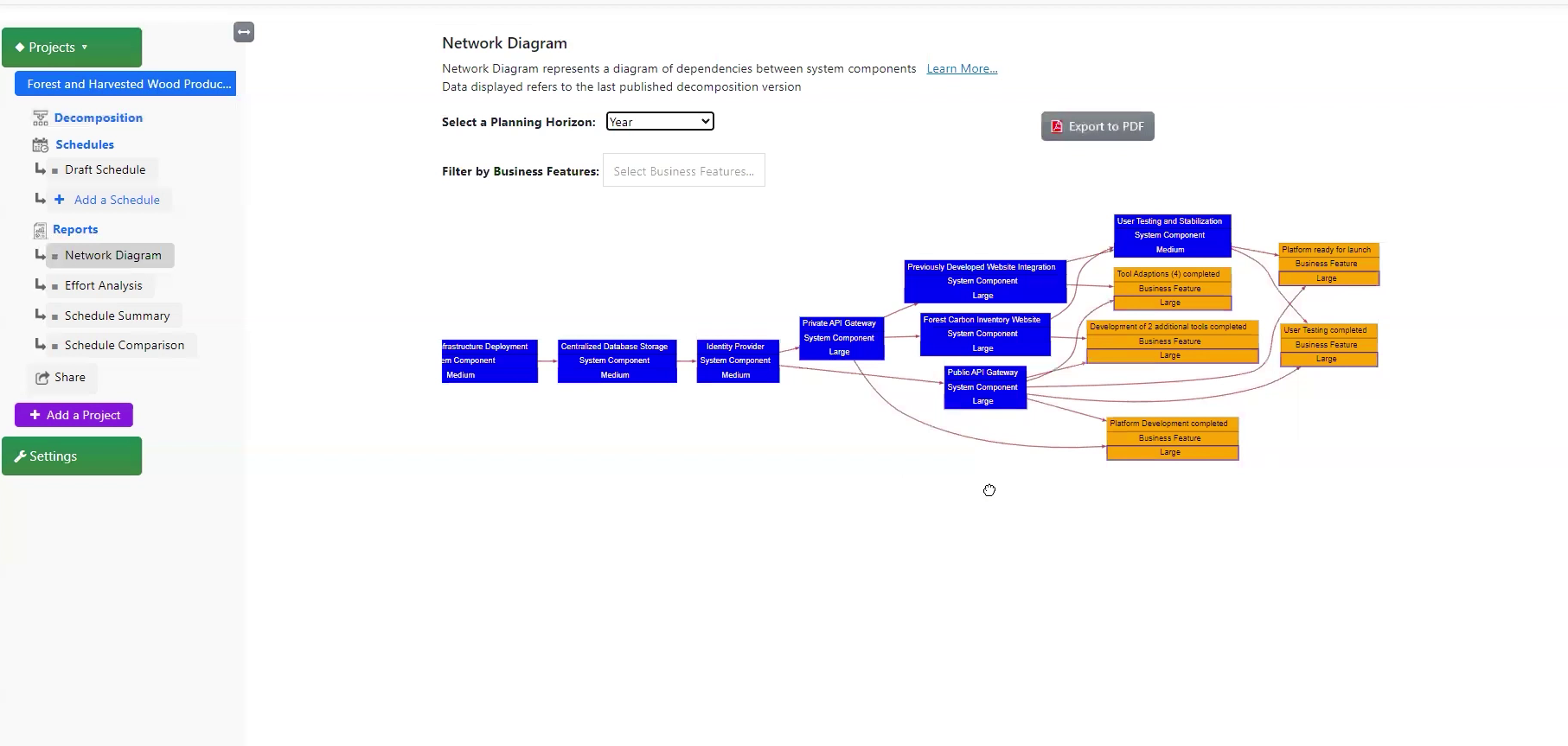
Now, let’s go to the Schedule tab and build a schedule. We select 2024. Let’s configure teams. As we want a maximum of two teams, let’s define two dev teams for the schedule; the app will parallel the deliverables execution where it’s possible. Let’s also define other teams such as testing, infrastructure, and business analytics team. Each team has a calendar day velocity. I specified 1 man-day for testing, business analytics and infrastructure teams and 2 man-days for development teams. Pretty much that indicates how many people I expect to have in those teams.
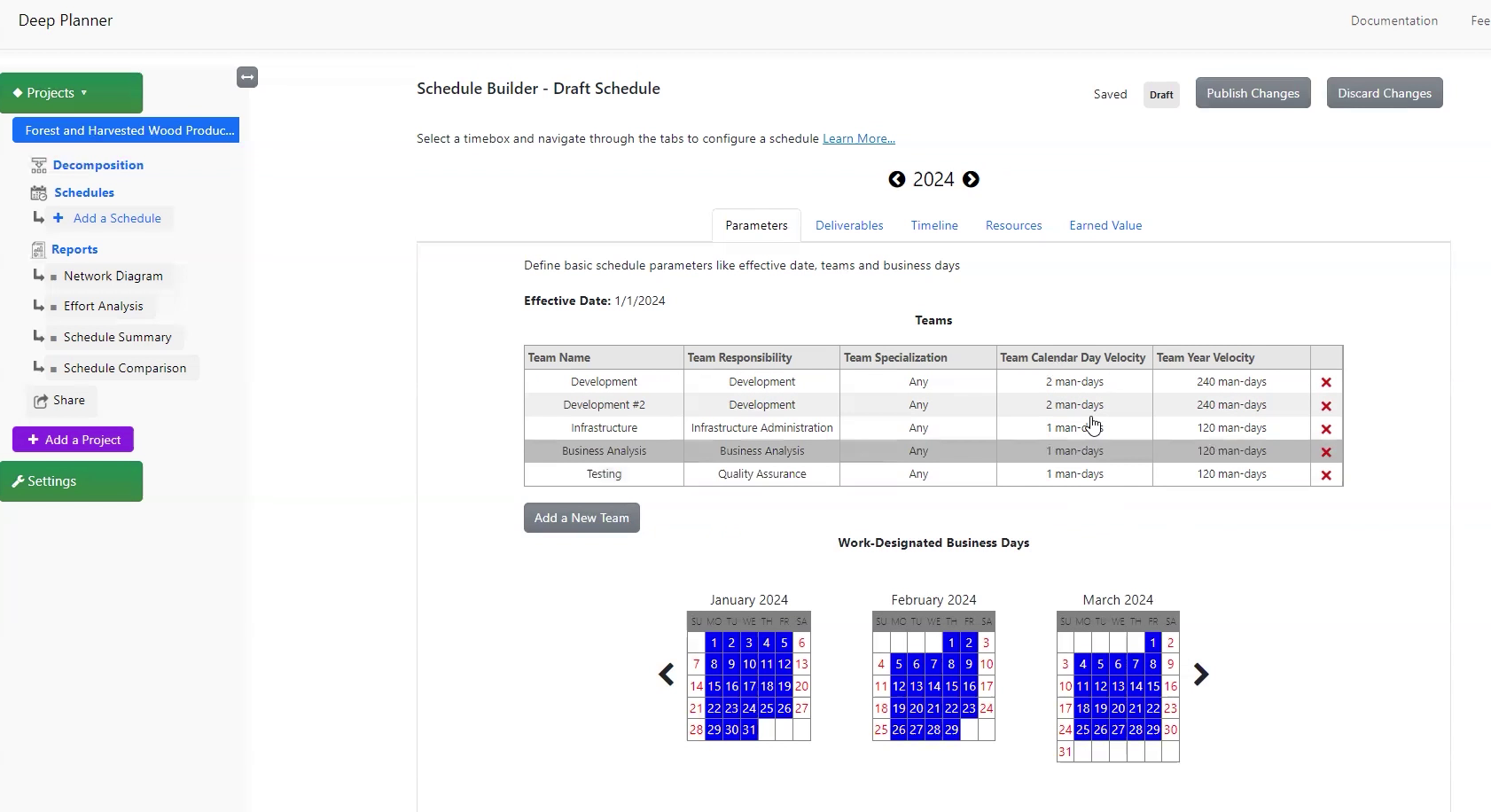
Next, we go to the Deliverables tab, add some system component deliverables, and specify that the first deliverable starts August 2nd. We’ve also checked off “Apply Uncertainty” to make sure my estimates are more realistic and include the potential risk factor.
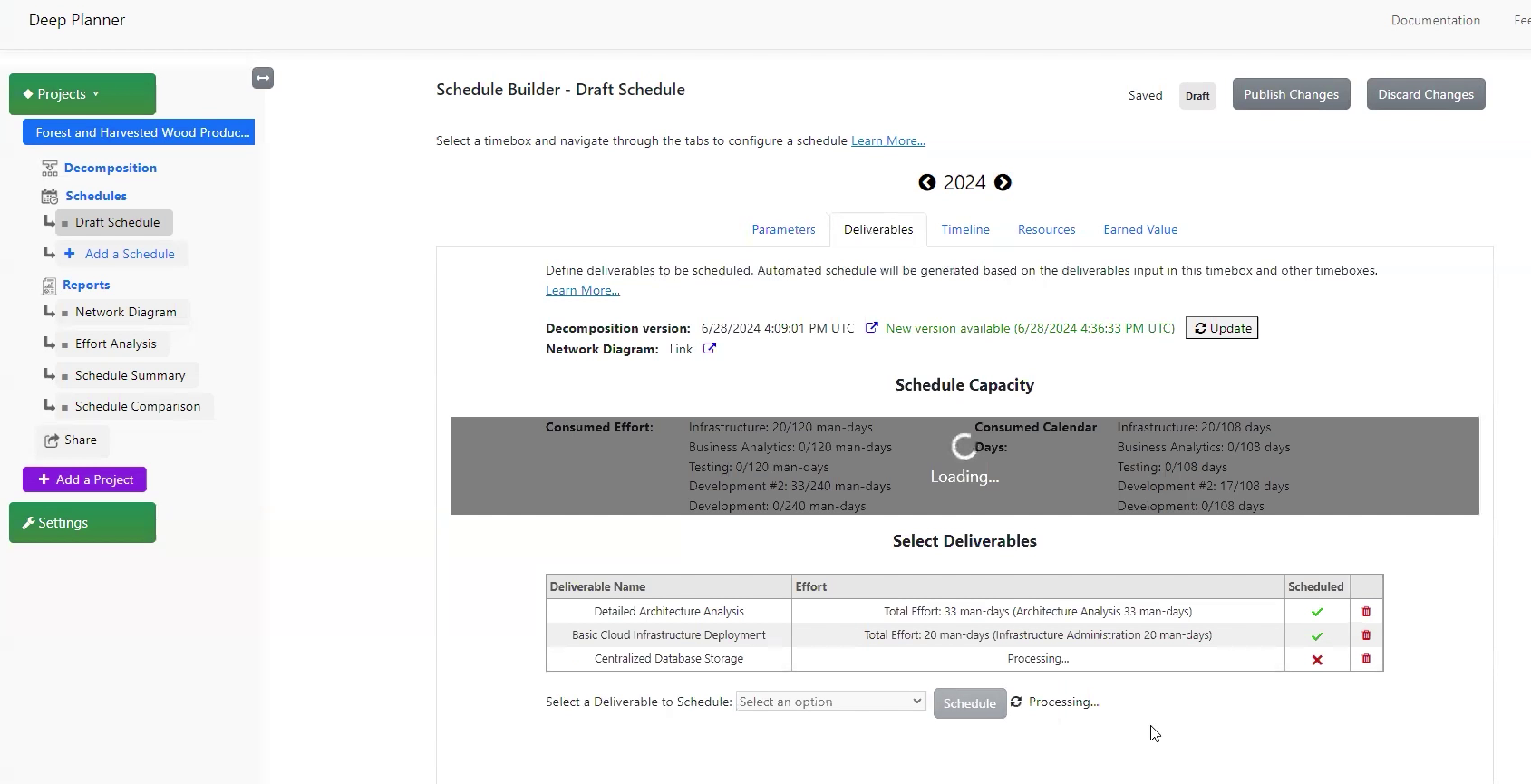
We need to schedule deliverables for 2025 and 2026 in the same manner and make sure they all have a green checkmark in the “Scheduled” column. If there is no green checkmark, one may need to transfer the deliverable to the next year or potentially add more teams to parallel the development (if possible).
All right, all done! Our schedule is ready to go. Let’s publish the schedule and look at the summary.
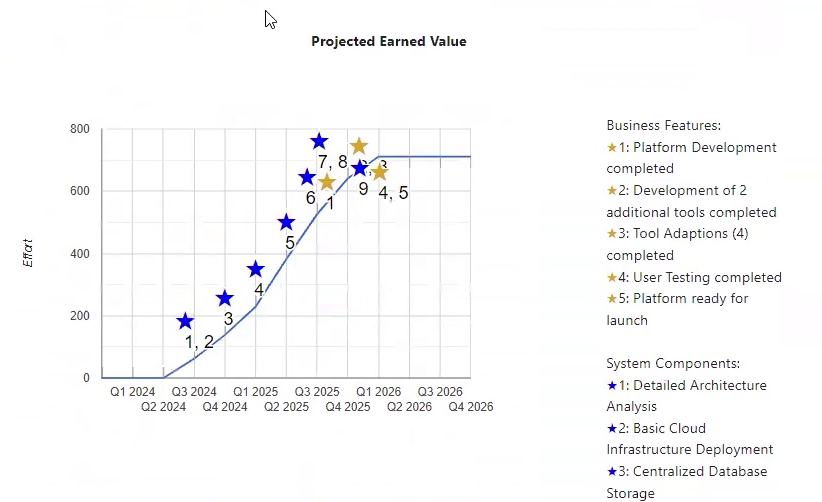
All right, in the summary, we can see that our schedule needs around 1.5 years to implement (Q3 2024 to Q1 2026). Business features such as platform development, development of 2 additional tools, tool adoptions will happen within time span of Q1 2024 to Q4 2025, whereas user testing and platform launch will happen Q1 2026. After that time platform stabilization can be started which accord to the RFP expectations should take 1 year with a final platform release happening in 2027. Now let’s take a look at the resources chart.
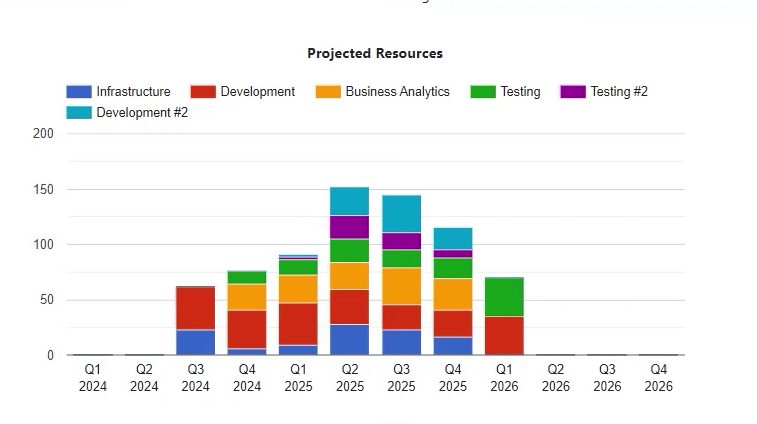
In the resources chart we can see that Development team and Testing team is required right from Q3 2024 literally to the end of the project on Q1 2026. Development #2 team and Testing #2 team will be required just for a fraction of the project timeline from Q1 2025 to Q4 2025. We will also need a business analyst and an infrastructure person.
Let’s sum everything up and create a final summary document containing key delivery dates and budget data.
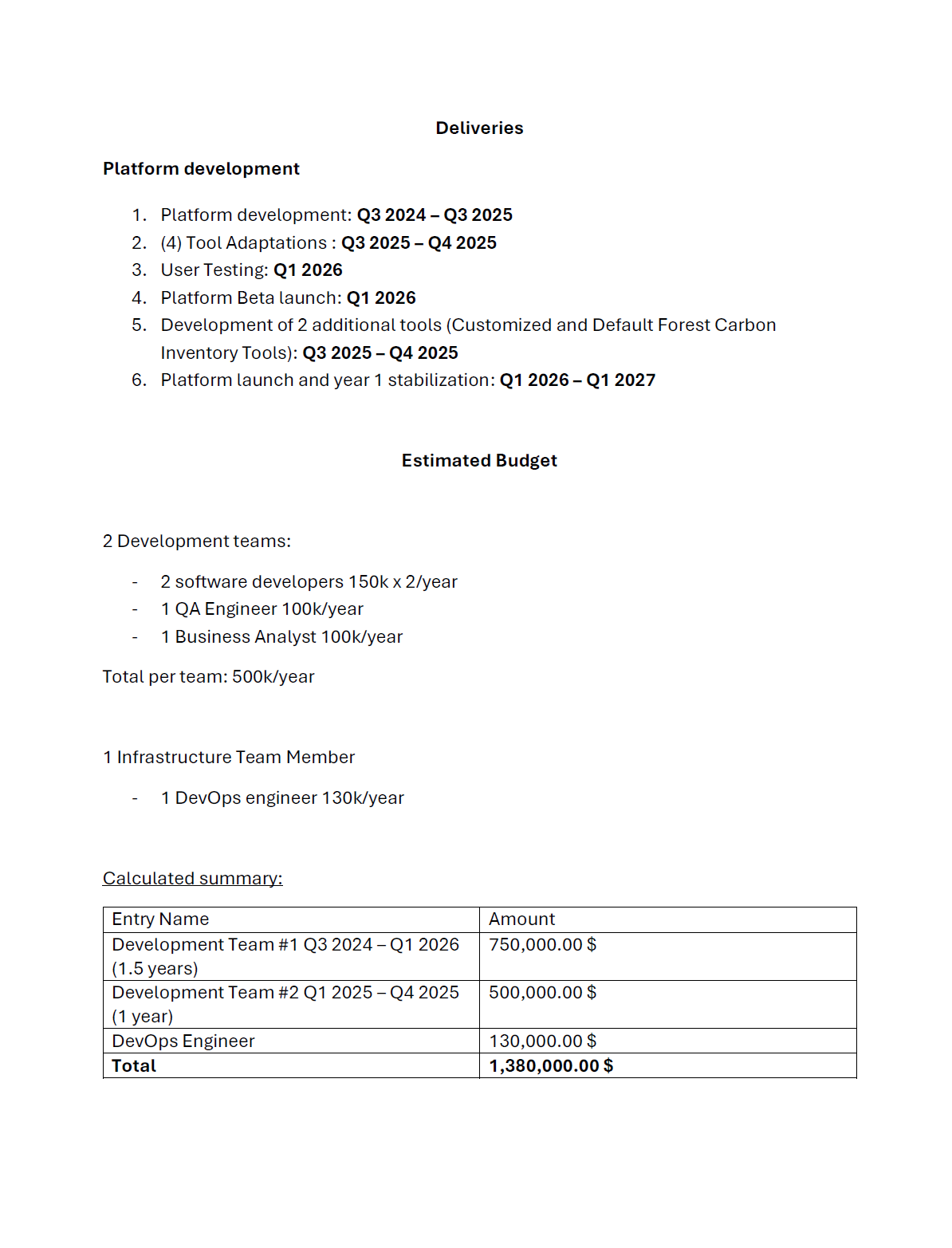
For the budget, I used market data to evaluate the job salaries. Make sure to conduct your own market research, include your own salary and potential other costs before estimating the final budget
OK, now let’s create a Response document. To do things faster, we will be using ChatGPT to generate it based on our inputs. We will include all our deliverables, their finish dates, and the budget details. Let’s see what it generates.
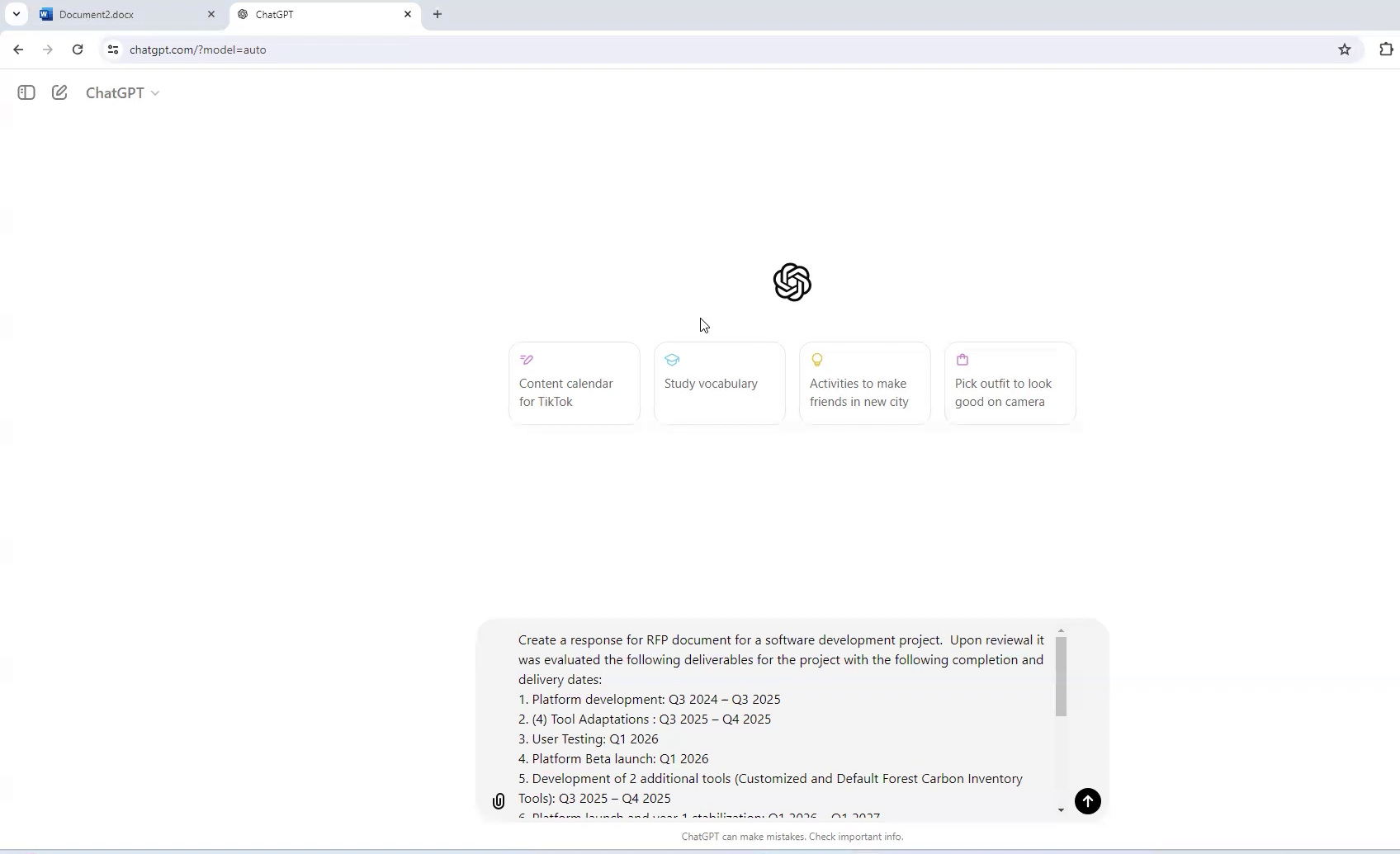
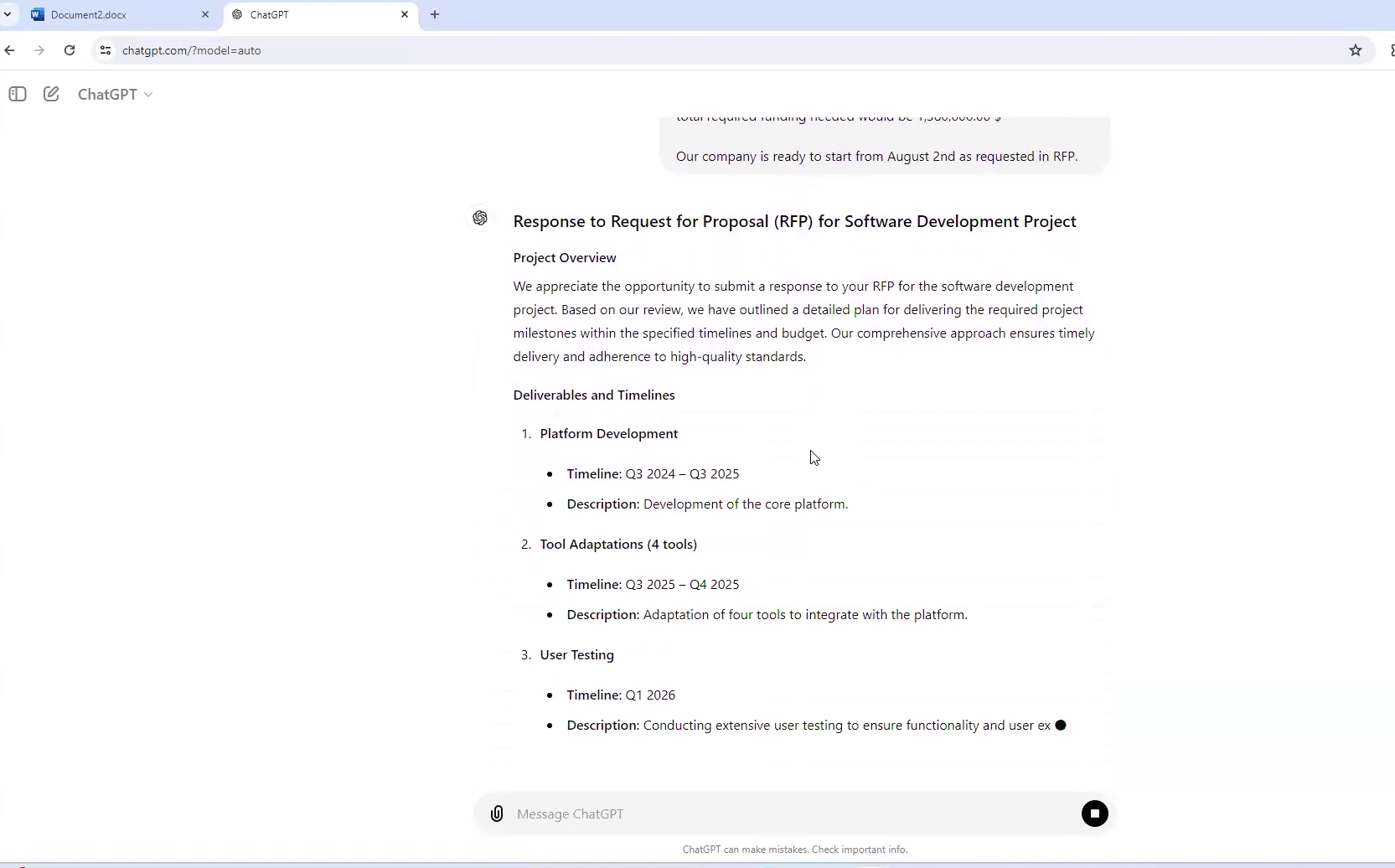
Alright! ChatGPT never disappoints 🙂 We can see it generated a pretty nice starting document, which we need to add just a few details into. We’ll be adding some general information about our company, why we showed interest in this project, and contact info.
When the response document was complete the final step is to create a package containing all necessary information. In our case it can be very useful to include documents such as list of system components, activities, network diagram, schedule summary and of course the response document itself. Luckily most of it can be generated by using a simple PDF export feature in Deep Planner.
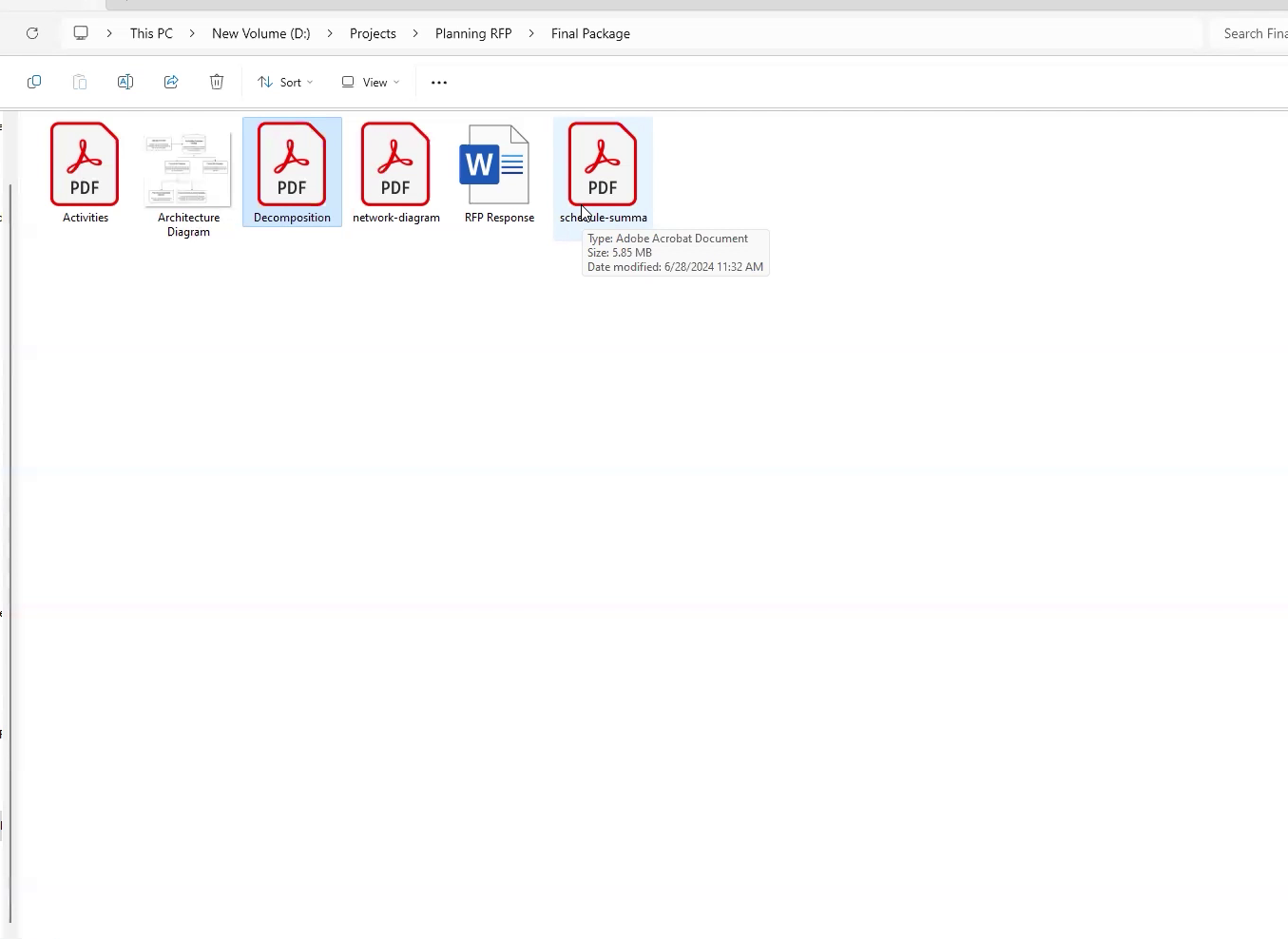
All done! Now we can submit the proposal along with all of the project design documents to the requestor. I wish you good luck with being selected for the contract 🙂
For more information about the app used to create this proposal, please check out the website https://deepplanner.io.
For the more context please also check out the video version of this article:

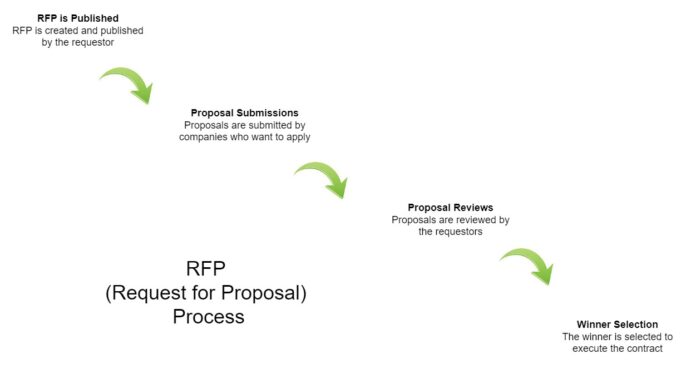
[…] In order to calculate project efficiency, we need to decompose the project into system components with their effort values and enter those deliverables into the system. Luckily we already did all of that prep work, so the only thing left for us to do is entering the deliverables into a schedule to generate reports. To learn more about how to decompose a project in Deep Planner, please refer to our article, “Creating a Response for Software RFP with AI and Deep Planner App”. […]
[…] the monotonous work and build quality schedules in a quick and easy way. Check out the article on Decomposition with Deep Planner to learn […]
Your ability to draw connections between seemingly unrelated ideas is nothing short of remarkable. Every sentence feels like it’s part of a larger whole, and the more I read, the more I realize how carefully each word has been chosen. There’s a depth here that is truly rare.
Thanks! I’m really trying my best to make it a quality content for my users.
Sign up for more articles like this and stay tuned for more!
LinkedIn: https://www.linkedin.com/showcase/deepplanning
Facebook: https://www.facebook.com/deepplanningtech/
YouTube: https://www.youtube.com/channel/UCLBXbwM8nBlkPUItrWKh3Ww
Twitter: https://x.com/DeepPlanning